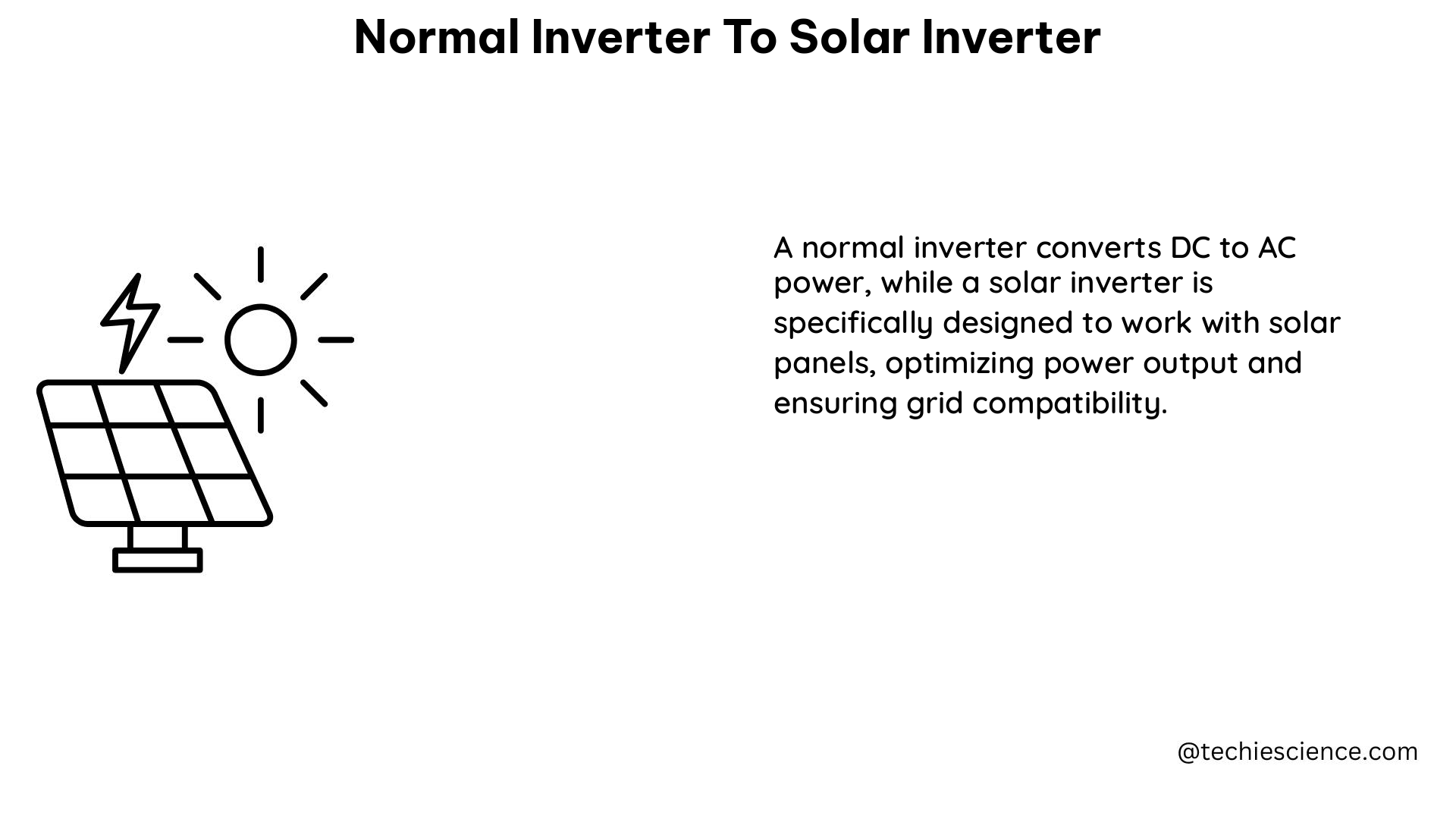Converting a normal inverter to a solar inverter can be a cost-effective way to harness the power of the sun and reduce your electricity bills. This process involves integrating solar panels, a solar inverter charger controller, and other necessary components to create a self-sustaining energy system. In this comprehensive guide, we’ll explore the technical details and considerations to ensure a successful conversion.
Understanding the Differences: Normal Inverter vs. Solar Inverter
A normal inverter requires an existing power source, such as the grid or a generator, to convert DC (direct current) electricity to AC (alternating current) for household use. In contrast, a solar inverter can produce constant AC electricity directly from DC power generated by solar panels, even when the grid is down.
Solar inverters can be further categorized into two types:
- Pure Solar Inverters: These inverters use DC electricity directly from solar panels to generate AC power.
- Hybrid Solar Inverters: These inverters have two DC power sources: a battery and a solar panel. The inverter can draw power from both sources to meet the energy demands.
Key Technical Specifications for Conversion

- Solar Panel Wattage:
- The wattage of your solar panels determines the amount of electricity generated.
- For example, if you have three 395-watt solar panels, your total system wattage would be 1,185 watts.
-
When selecting solar panels, consider factors like efficiency, temperature coefficient, and warranty to ensure optimal performance.
-
Inverter Charger Controller:
- The inverter charger controller, or conversion set, manages the power flow between the solar panels, batteries, and AC load.
- Look for a controller with efficient power management and compatibility with your specific inverter and solar panel setup.
-
Ensure the controller can handle the maximum power output of your solar panels and provide the necessary voltage and current regulation.
-
Battery Capacity:
- If you’re using a hybrid solar inverter, you’ll need a battery to store excess energy.
- The battery capacity should be sufficient to meet your energy needs during periods of low sunlight or high energy consumption.
-
Consider factors like battery type (lead-acid, lithium-ion, etc.), capacity (in Amp-hours or Watt-hours), and depth of discharge to ensure reliable energy storage.
-
Inverter Efficiency:
- The efficiency of the inverter is a crucial factor in converting DC to AC power.
- Look for inverters with high efficiency ratings, typically ranging from 90% to 98%, to maximize your energy production and minimize losses.
-
Efficiency can be affected by factors like input voltage, load, and environmental conditions, so it’s essential to choose an inverter that can maintain high efficiency across a wide range of operating conditions.
-
Monitoring System:
- A monitoring system, such as a cell phone app or a dedicated display, can help you track the power production and consumption of your solar system.
- This data can be used to optimize your energy usage, identify any issues with your system, and monitor the overall performance of your solar installation.
- Look for monitoring systems that provide real-time data, historical trends, and alerts for any anomalies or system faults.
Conversion Process
-
Assess Your Energy Needs: Determine your daily or monthly energy consumption to size your solar panel and battery system accordingly.
-
Select Solar Panels: Choose solar panels with the appropriate wattage and efficiency to meet your energy requirements.
-
Install the Inverter Charger Controller: Connect the normal inverter to the solar inverter charger controller, which will manage the power flow between the solar panels, batteries, and AC load.
-
Connect the Solar Panels: Install the solar panels and connect them to the inverter charger controller.
-
Add Battery Storage (if using a hybrid system): Install the battery bank and connect it to the inverter charger controller.
-
Configure the System: Ensure all connections are secure and properly grounded. Configure the inverter charger controller settings to optimize the system’s performance.
-
Test and Commissioning: Perform a comprehensive system test to ensure the proper functioning of the converted solar inverter. Obtain any necessary permits or approvals from local authorities.
-
Monitor and Maintain: Regularly monitor the system’s performance using the monitoring system and perform routine maintenance to keep the components in optimal condition.
By following these steps and considering the technical specifications, you can successfully convert your normal inverter into a solar inverter, harnessing the power of the sun and reducing your reliance on the grid.
References:
- Solar Choice: Optimizing Solar Panel System Efficiency Through Inverter Sizing
- Sandia Test Protocol for Evaluating Inverters Used in Grid-Connected PV Systems
- Electronics Stack Exchange: Do solar inverters dump excess generated energy as heat?

The lambdageeks.com Core SME Team is a group of experienced subject matter experts from diverse scientific and technical fields including Physics, Chemistry, Technology,Electronics & Electrical Engineering, Automotive, Mechanical Engineering. Our team collaborates to create high-quality, well-researched articles on a wide range of science and technology topics for the lambdageeks.com website.
All Our Senior SME are having more than 7 Years of experience in the respective fields . They are either Working Industry Professionals or assocaited With different Universities. Refer Our Authors Page to get to know About our Core SMEs.